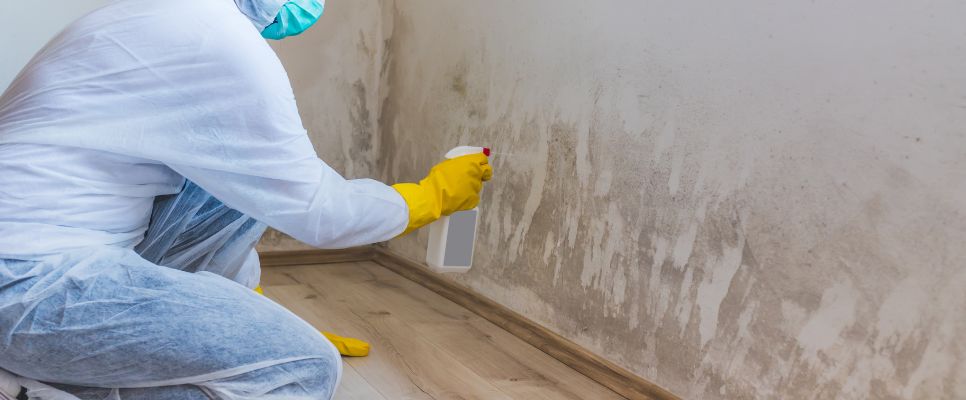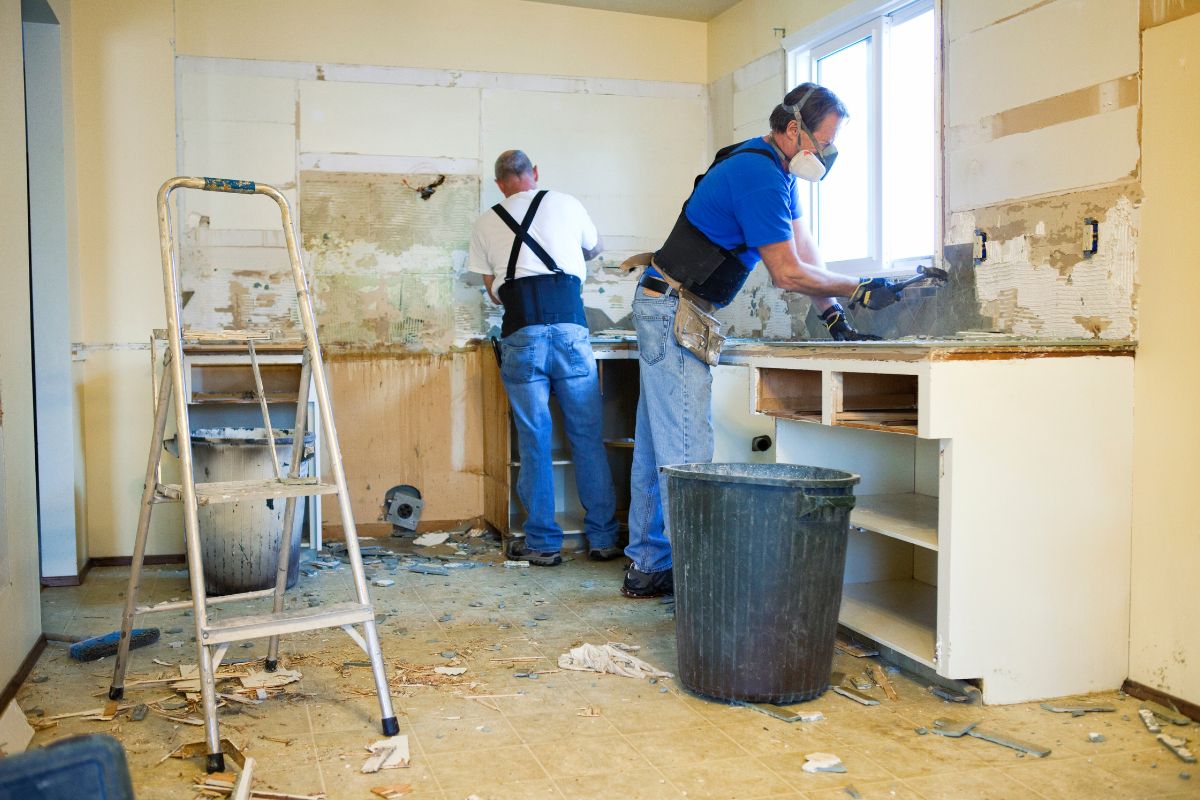Cost of Wall Removal: Full Details On Factors, Costs And Permits
Demolition of the wall allows a homeowner to gain an open environment. The experience of bigger, brighter, and more inviting spaces due to wall removal for renovation becomes a great asset for any home. However, wall removal is not a straightforward process. Numerous factors must be considered when calculating the cost to knock down a wall, including the type of wall (load-bearing or non-load-bearing), structural complexities, necessary permits, and post-demolition construction. Difficult wall removal—such as those involving plumbing, electrical, or major structural components—can increase expenses significantly. While non-load-bearing wall removal tends to be less costly, large structural removals involving load-bearing walls require professional intervention and the installation of support beams. The Cost of Wall Removal: Full Details On Factors, Costs And Permits must be reviewed carefully to ensure safety, compliance, and accurate budgeting, with prices ranging from $500 to $15,000 depending on the project's complexity.
Load-Bearing and Non-Load-Bearing Walls
Non-load-bearing walls exist purely for division and would not contribute to sustaining any weight in the structure of a house. They are simply easy to remove, fast, and inexpensive. Load-bearing walls take the load down to them from the structure above. A knockdown of one load-bearing wall would require the introduction of other supports, such as a beam or columns into the building work, thereby escalating costs.
If you are still uncertain whether the wall is load-bearing, please contact a structural engineer to verify your assumption. They can visit the house and give you a report of what is required for safe demolition. The cost of an engineer is variable based on complexity, with prices ranging from $300 to $1,000.
Wall Removal Cost: Price Breakdown And Other Expenses
Taking down a non-load-bearing wall would cost anywhere between $300 and $1,000. The actual cost varies depending on the wall size and type. Removing a load-bearing wall would cost a lot more: from $1,200 to $10,000, with costs varying between single- and multi-story houses.
For a one-story house, expect to pay somewhere in the range of $1,200 to $5,000. These costs are much higher for multi-story houses, as greater consideration must be given to support so as not to create structural damage. Thus the range for a load-bearing wall in a multi-story building is $3,000 to $10,000.

Cost Breakdown of Wall Removal
The cost of removing a wall is typically broken down as follows:
- 50% Materials – This includes beams, drywall, paint, and other materials required.
- 35% Labor – This includes contractor, electrician, and plumber charges.
- 15% Permits and Fees – This includes council permits, engineer reports, and insurance fees.
Other Expenses to Budget
Renovation projects always have unexpected expenses. Homeowners must budget an additional 15% to allow for unexpected expenses. Other expenses could include:
- Interior Designer Fees – If you need help to redesign the space, interior designing charges $50-$200 an hour.
- Rubbish Disposal – Demolition or otherwise disposal of any material would cost from $100-$500, depending on the material.
- New Lighting Fixtures Installation – If lighting fixtures were installed on the wall being demolished, new fixtures will be needed. Installation of a new fixture costs anywhere between $150-$800.
Wall Removal Cost Influencing Factors
Several factors influence the total cost of wall removal. These include the type of material, electrical and plumbing work, structural modifications, permits, and finishing work.
Type of Material
Drywall and timber stud wall removal would be easier and less expensive than removing a brick or concrete wall. Removal of drywall drawbacks would cost $300 in a class, whereas removal of brick and concrete walls with a corresponding market price of $1,000-$1,500 per square meter.
Electrical and Plumbing Work
Most walls have electrical wiring, plumbing pipes, and gas lines making it necessary to reroute these following wall demolition. The electrician's charge runs at $50-$100 for the hour. If plumbing requires diverting, expect an average of $45-$200 per hour. Depending on the nature and extent of work, relocation of larger gas or water lines may exceed $1,000.
Structural Modifications
A load-bearing wall requires a new support system. Costing between $1,300 to $5,000, steel beams support up to $55 to $400 for laminated veneer lumber or LVL beams. Installing a beam will be charged at about $200-$400 per beam. An incorrectly installed beam could cause major structural problems, so be sure to have this work done by a qualified practitioner.
Permits and Approvals
The removal of a wall is generally regarded as a job that will require a permit from most councils. A building permit can cost anywhere from $700 right up to $1,000, according to location. Other costs that may be incurred include the engineer's report, which could be $200-$1,000, and architectural plans, costing up to $1,000. If renovation work involves over $12,000, Home Warranty Insurance will be required, which can add another $1,000 to the budget.
Finishing Work
After the wall is removed, additional work may be needed to restore the space. This includes:
- Drywall Repair – Installing new drywall costs around $1.50 per square foot.
- Painting – Painting the area runs $300 to $750, depending on room. Flooring – If the wall covers a section of the floor, the flooring will need to be replaced. The cost will vary depending on the material.
- Cabinetry and Shelving – If the wall contains built-in shelving, a carpenter may be needed to replace shelving or cabinets.

Steps Involved in Wall Removal
Removing a wall takes planning, getting approvals, demolition, and restoration after demolition.
- Planning and Inspection
Before beginning, determine whether or not the wall is load-bearing. Have a structural engineer consulted if uncertain. Gather information on electrical, plumbing, or gas lines affected.
- Obtaining Approvals
Talk with your local council and determine whether a permit will be required. Get approvals necessary and hire licensed experts for the work.
- Demolition
Temporary supports are in place while demolition is undertaken in order not to cause damage to the structural aspects. The wall is removed deliberately so as not to harm the surrounding space.
- Installing Structural Support
When the wall is load-bearing, a beam or new wall is added to hold the structural integrity intact.
- Post-Demolition Work
After the wall is demolished, exposed surfaces must be fixed. This could include the fitment of new drywall, painting, and the reconnection of electrical or plumbing connections.
Should You Remove a Wall Yourself or Hire a Professional?
Removing a wall is not a DIY project; unless it's purely non-load-bearing, if the wall removed was load-bearing or contained electrical or plumbing lines, mistakes could potentially cause catastrophic structural failure or even safety risks. A professional should ensure that it's done correctly and according to the building code.
Homeowners can save money by preparing the site before work and cleaning the site after demolition. The actual removal, however, must be completed by licensed builders.
Final Thoughts
The destruction of a wall can make a house feel large and welcoming. Prices will differ depending on wall type, structural requirements, and other works that arise after demolition. Depending on the complications, the homeowner should consider spending from $500 to $15,000 for this project.
The path should be simple: find qualified practitioners, get permits, and pay extra. Proper planning and professional execution will result in a successful renovation that adds value to your home.







